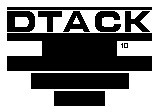APIS Volume 2, Number 10, October, 1984

In this issue
- Bears, bees and beekeepers in Florida.
BEARS AND BEES IN FLORIDA
Bears and bees were the topic of several meetings around the state in the last few months. Florida Game and Fresh Water Fish Commission officals were present at one in Polk county and the Florida Farm Bureau's Honey Advisory Committee voted to continue its long-standing resolution advocating preference of the beekeeping industry's welfare over that of the Florida bear. Mention of bear is guaranteed to get strong reactions by beekeepers. This is understandible when one is confronted with the devastation one of these mammals can cause in a bee yard. Unfortunately, mention of killing a bear brings out similar emotions in those who are interested in conserving this wildlife resource.
Besides the emotional content, the subject is confused because so little verifiable information is available either on the amount of damage bears cause to beekeepers or the physical number of bear in a given area. Much has been written about the bee-bear relationship over the last thirty years. As far back as 1939, Dacey recommended the use of electric fences in Gleanings in Bee Culture. Experiments in Florida in the 1950s indicated that properly constructed fences, maintained by the University of Florida, effectively prevented bear damage.
In 1981, an extensive survey of the bear-beekeeper conflict was undertaken by the Florida Game and Fresh Water Fish Commission. Results were published in the May, 1982 issue of American Bee Journal, Vol. 122, pp. 372-5. The monetary loss and numbers of hives operated by Florida beekeepers experiencing bear depredation were summarized as follows:Monetary Loss to Bears by Florida Beekeepers
| Total Hives | Avg. Hives/beekeeper | Tota Loss | Avg. Loss/beekeeper | |
| Florida | 64,602 | 592.7 | $104,868 | $962.10 |
| South Florida | 9,000 | 500 | $ 15,255 | $953.40 |
| North Florida | 55,602 | 611 | $ 89,613 | $984.50 |
Methods to Protect Apiaries From Bears
| Elect. Fence | None | Move Bees | Killl Bear | Other | Bear Stand | Move Bear | |
| Number Responding | 54 | 28 | 15 | 15 | 13 | 4 | 1 |
The category, Other included dogs near apiary, locate hives near homes, play radios all night, white socks tied around yards, lion dung, sweaty clothes, flashing light, mothballs.
Since the survey was taken, some beekeepers are reporting increased populations of bears and more damage to bear in their area. The Florida Game and Fresh Water Fish Commission will gladly accept more information on bear damage and reported sightings. Contact your district office and ask for the biologist in charge of nuisance animal problems. A toll-free number is listed inside the front cover of the telephone directory.
A properly constructed and maintained electric fence appears to be the most effective prevention against black bear. One Florida beekeeper maintains that eventhough located in the heart of bear country, he has never experienced any depredation on an apiary enclosed by a working electric fence. This was published in the April, 1982 Issue of American Bee Journal Vol. 122, pp. 280-1, entitled: "Beekeeping Enters the Solar Age," by David S. Maehr, which also detailed plans for a solar-powered fence. As reported in the March-April, 1982 issue of Florida Wildlife, there is some evidence that trapping an animal and resultant handling for tagging and pulling a tooth for subsequent study will cause enough trauma to deter bears from returning to a bee yard. One study in the Apalachicola forest revealed that out of nine bears captured, none returned to the same apiary; only one was recaptured nine days later, a juvenile in another bee yard eight miles away.
The bear-beekeeper conflict is not unique to Florida. As reported by W.G. Lord and J.T. Ambrose, "Bear Depredation of Bee Hives in the United States and Canada," American Bee Journal Vol. 121, pp. 811-815, 39 of 62 states and provinces reporting bear damage. In descending order of effectiveness, means to control black bear damage were reported to be electric fences, platforms and hunting.
Sincerely,
Malcolm T. Sanford
Bldg 970, Box 110620
University of Florida
Gainesville, FL 32611-0620
Phone (352) 392-1801, Ext. 143 FAX: (352)-392-0190
http://www.ifas.ufl.edu/~entweb/apis/apis.htm
INTERNET Address: MTS@GNV.IFAS.UFL.EDU
©1984 M.T. Sanford "All Rights Reserved

















